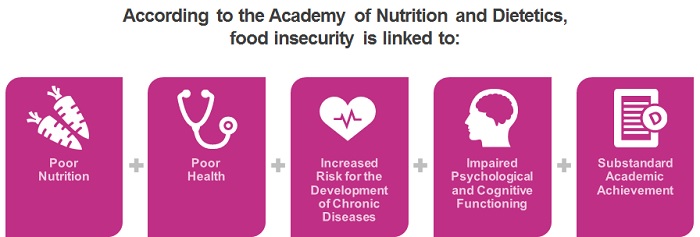Hunger and Health
Hunger and health are intimately connected.
Food is a basic need and without it, or without enough of it, people will not be able to live healthy lives. Food is the fuel that enables us to live.
This is something that we all know intuitively but over the last few years, some extremely compelling research has begun to prove that hunger and food insecurity have immediate and lasting health effects.
In a presentation to the Institute of Medicine in 2012, Dr. Hillary Seligman showed that hospital admissions for hypoglycemia, while marginally increased for patients with low-incomes, steadily increased as the month progressed (and likely as their SNAP, or FoodShare, benefits began to run out).
Also in 2012, McLaughlin, et. al. found that food insecurity predicted mental disorders in adolescents beyond other low-socio-economic factors. This means that controlling for all of the other factors that are co-morbid with food insecurity, food insecurity was still associated with a higher rate of mental disorders. This seems to suggest that there is something unique about having food that helps to ensure that the brains of our children develop normally.
While the human costs are incalculable, we can approximate the social costs.
In a 2011 update to the landmark 2007 Sodexo Foundation/Harvard University Domestic Cost of Hunger report, the Center of American Progress and Brandeis University estimated that the cost of hunger in Wisconsin is approximately $2.6 billion annually. These costs are associated to diet related illness and the long-term costs of poor educational outcomes for children who are hungry.
This is preventable.
And we are beginning the work to learn how we can become better partners with hospitals, clinics and healthcare systems to help address preventing these costs and improving the health of all Wisconsin families.
To help further illuminate the connections between food insecurity and health, our national partner Feeding America created an interactive data visualization, along with an FAQ document and companion brief to support exploration of the healthcare costs of food insecurity.




